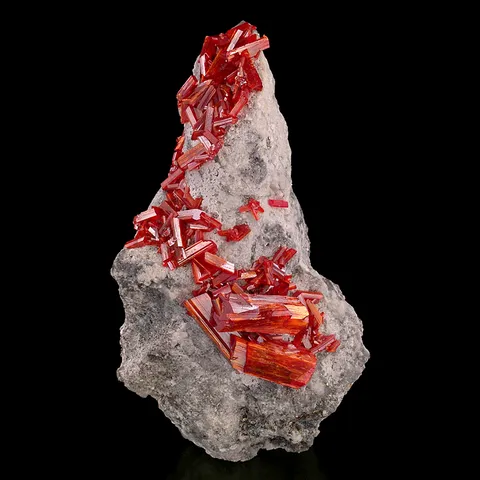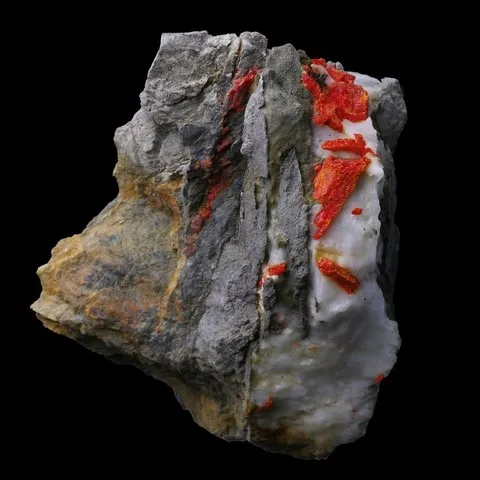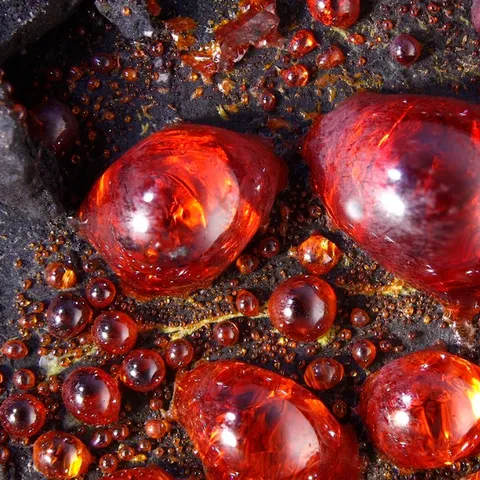REALGAR
Class : Sulfides and sulfosalts
Subclass : Sulfides
Crystal System : Monoclinic
Chemistry : AsS
Rarity : Fairly common
Realgar is with orpiment the most common arsenic sulphide. It is found in low temperature hydrothermal deposits, mainly in epithermal deposits, directly linked to recent volcanism, and in certain fumarolic deposits. In these deposits, this mineral is generally associated with orpiment, cinnabar or stibnite. Its name comes from the Arabic Rhaj al Ghar (mine powder), recalling the fact that it often appears as fine dust resulting from the decomposition of arsenic minerals, lead or antimony veins. Realgar has an adamantine to resinous luster, it is transparent to translucent, yellow-orange to red-orange in color. This mineral is sectile and exhibits perfect cleavage according to {010}. It is also highly photosensitive : the crystals crack under the light and turn into yellow powder consisting of arsenolite and orpiment. Its conservation in collection therefore requires total darkness. Realgar forms prismatic to acicular crystals, streaked according to [001], grainy masses, sometimes concreted crusts or even droplets (fumarole deposits). It is a mineral sought after by collectors because of its vivid color. Its instability prohibits any use as ornamental stone or gemstone. It was once an important ore of arsenic, today arsenic is mainly recovered fromarsenopyrite. It is used mixed with saltpeter in pyrotechnics to give a powerfully luminous white, in glassmaking, in tannery. In the Middle Ages, it had a role of pigment and medicine.
Realgar in the World
Realgar in France
Twinning and special crystallizations
Fake and scams
Hardness : 1.5 to 2
Density : 3.456
Fracture : Irregular
Streak : Orange to red
TP : Translucent to transparent
IR : 2.538 to 2.704
Birefringence : 0.166
Optical character : Biaxial -
Pleochroism : Visible
Fluorescence : None
Solubility : Nitric acid and aqua regia
Magnetism : None
Radioactivity : None





